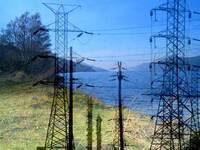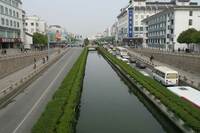- England
- Scotland
- France
- Holland
- Germany
- Italy
- Spain
- Portugal
- USA
- China
- Japan
- India
- Iran
- Advice
- Gardens
- England
- Scotland
- France
- Holland
- Germany
- Italy
- Spain
- Portugal
- USA
- China
- Japan
- India
- Iran
- Advice
- Garden Tours
Book: Landscape Planning and Environmental Impact Design: from EIA to EID
Chapter: Chapter 1 The future of town and country planning
Great harm was done to the environment by single-use planning. When working on the first edition of this book, I made a discovery which surprised me at the time but seems obvious in retrospect: there is a common pattern to the recent history of every modern land use - and it is a product of scientific Modernism:
This is the story of planning for forests, roads, rivers, industry, commerce, agriculture, minerals and urban renewal, as will be discussed in Part 2. Other land uses, like parks and nature reserves have been run in a 'single purpose' manner but have been less criticised, so far. Writing about T E Lawrence, Liddel Hart made a related point: 'The increasing specialisation of warfare is largely responsible for the sterilisation of generalship. It is likely to become worse as warfare becomes more scientific. It can only be overcome by wide thought and hard work' (Hart, 1936:478). Single-purposism results in roads planned only for motor vehicles, forests for timber production, farms for food, rivers for flood water, bus stops for standing in queues, parks for recreation, stations for getting off trains and buildings for sleeping or working. Single-purposism is obviously bad for the environment. If students are isolated on a campus, they lack shops, entertainment, part-time jobs and a variety of accommodation. If places to work are isolated from places to live, everyone must commute. If housing is isolated from reservoirs, parks and natural areas, people cannot choose to live in contact with nature. If rivers are planned as industrial corridors, they cannot fulfil their potential as wild life habitats or public open spaces.


